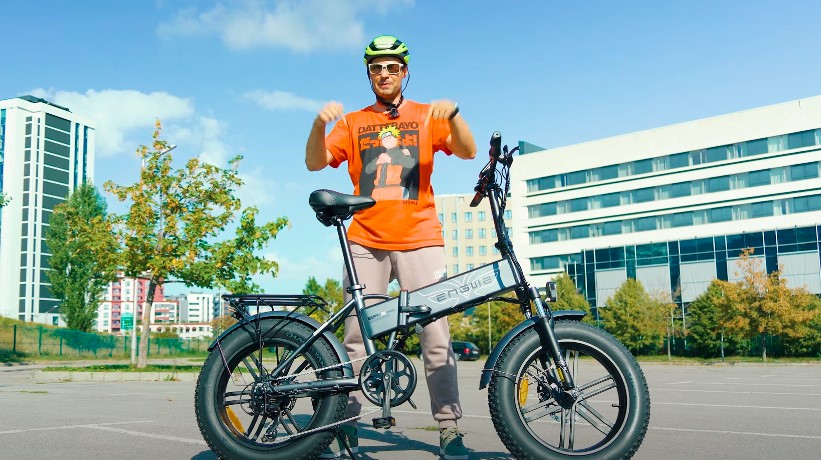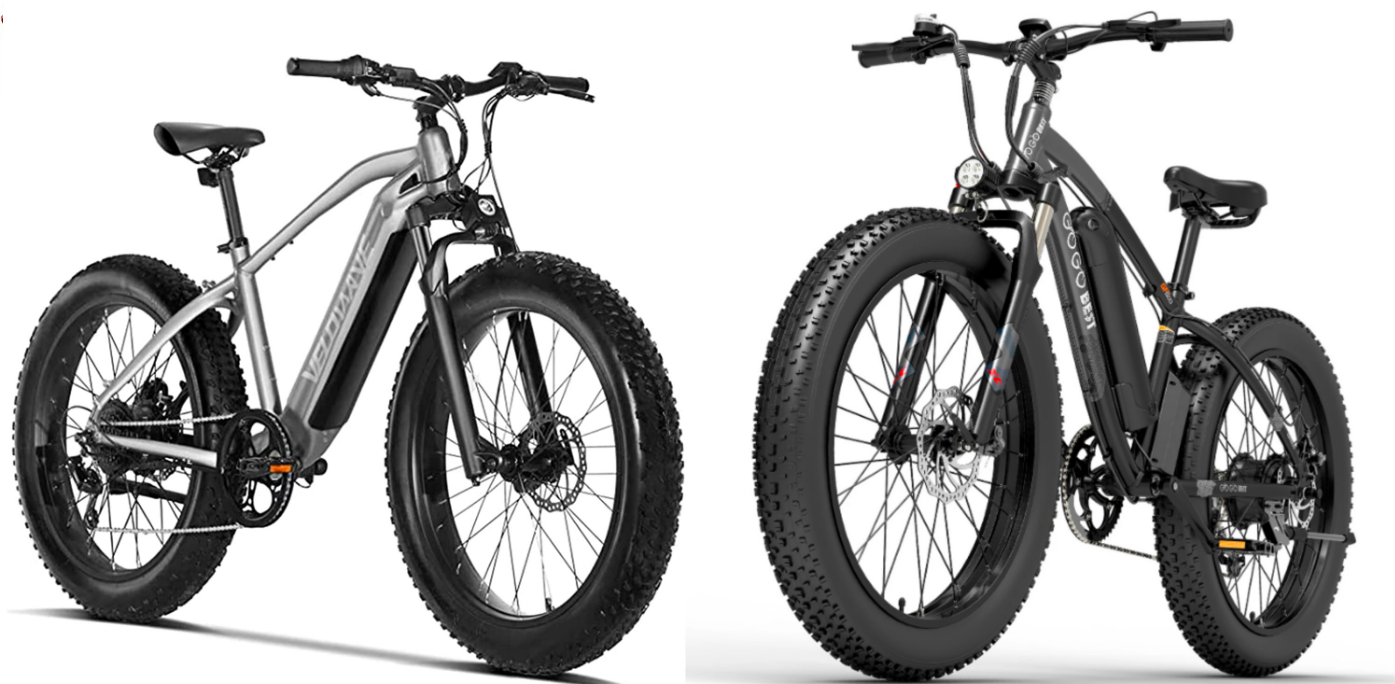Getting a new e-bike can be a real hassle, as you have to look at several specifications, including the motor. Among all the specifications, the motor is the crucial one, as it determines the load capacity, speed, torque, performance, etc.
However, if you’re looking for a powerful motor-attached e-bike, going above a 750W motor is an ideal choice. You can choose between a 750W and a 1000W e-bike, as both are powerful and robust enough to excite your riding experience. Although a 1000-watt ebike is more robust and faster than a 750-watt, its up to you which one you need.
And if you’re interested in both of them, knowing the comparison of 750w vs 1000w ebike could help you the most. In this article, you can learn about 750 vs 1000-watt ebike motors and their in-depth comparison. Stay tuned.
Overview Of 750w Electric Bike
When it’s about choosing an electric bike that is made for all terrain and has the better climbing ability, then 750 watts would be enough. It comes with the ability to make a city commute or urban commute exciting with its thrilling speed.

An e-bike that is equipped with a 750w motor will let you ride the bike at 20mph to a maximum of 28 mph of speed. With the pedal-assist mechanism, you can reach a top speed of 28 mph or 45 kph.
However, the maximum speed of 28 mph earns the 750w motor-assisted e-bike a Class 3 classification. A class three bike is mainly suitable for heavy riders and can easily handle 250 to 300 pounds weight. Aside from hauling heavyweights, a 750-watt e-bike also performs well on flat and off-road surfaces.
Moreover, you’ll also get some decent and fairly steep gradients, which is undoubtedly more than a 500-watt electric bike. So you can enjoy hill climbing as well, but performance will vary due to the hill’s steepness and the rider’s weight.
Where Can A 750W Electric Bike Be Used?
A 750w motor category electric bike is pretty powerful and suitable for all types of riding needs. However, if you specifically want to know about where you can use a 750-watt class three eclectic bike, follow the section below:
- Flat roads
- Off-roads
- Metropolitan streets
- Moderate hill-climbing
- Dirt bike paths or tracks
Advantage Of 750w Electric Bike
By using a 750w electric bike for your daily needs, you’ll get some key benefits. Here are some of the key benefits:
- Extremely good for daily and long commuting.
- Not that expensive.
- High speed will give you a thrilling and sweat-free commute.
- The increased range will let you cover more distance.
- Can easily handle any terrain’s stress.
- Torque output averages 80 Nm, making it suitable for all terrains and hill climbing.
Downsides Of 750w Electric Bike
Here are some of the downsides of a 750w electric bike:
- 750w electric bike is slightly heavy than 500w e-bikes.
- High speed can cause more incidents.
- Has restrictions on 16 states in the US.
Overview Of 1000w Electric Bike
1000W electric bike is one of the most powerful e-bikes in the class three category that offers high speed along with all of the top-notch features. You can enjoy 28 mph to 35 mph of speed while riding a 1000-watt motor-attached electric bike.

It can provide more torque than a 750-watt electric bike, allowing you to enjoy superior hill-climbing performance. You’ll get superb uphill performance with swiftness and comfort thanks to 85 NM of torque.
In short, you will be able to deal with some actual power and can use a 1000w e-bike on all terrain. Another thing that sets the 1000W e-bike apart from others is its load capacity, which can be up to 350 pounds.
Unfortunately, you cannot use this high-powered and high-speed electric bike in all states of the US as different states has a different law, for example, Newyork has its individual law for e-bikes. You can only use this class three category e-bike in six states, including
- Georgia
- Kansas
- Minnesota
- Oklahoma
- Oregon
- Virginia
Note: Before purchasing any class 3 category e-bike, regardless of whether you are from the US or elsewhere, always check your local traffic laws.
Where Can A 1000W Electric Bike Be Used?
Unlike any other type of motor power on an electric bike, you can enjoy a 1000w electric bike anywhere you want. Here are some of the examples where you can enjoy 1000w e-bike riding:
- Flat and off-roads
- Metropolitan streets
- Rocky terrain
- Top-notch hill-climbing
- Dirt bike paths or tracks
- Rugged terrain
Advantage Of a 1000w Electric Bike
Want to know what the core advantages that a 1000w electric bike offers for a rider? Know about them from the section below:
- Huge load-taking capacity makes a 1000w e-bike suitable for heavier and tall persons.
- You can enjoy high speed even in rugged terrain too.
- Excellent hill climbing capability.
- 1000w can be used for both short or long commuting.
- This class three electric bike can take huge 350+ pounds of weight.
Downsides Of a 1000w Electric Bike,
Unfortunately, a 1000w electric bike also has some downsides too. Discover those downsides from the section below:
- Many states require driving licenses to ride a 1000w e-bike
- You must ensure a helmet and other safety gear when riding
- High speed can cause more incidents
- Legal to ride 1000w e-bike in only six states
750w vs 1000w E-bike: Comparison Chart
Check out the comparison chart between the 750W and 1000W electric bikes. This chart will give you a brief idea of the core differences between these two powerful electric bikes:

| Motor Power | 750 Watt Electric Bike | 1000 Watt Electric Bike |
| Speed (in mph) | 20 to 28 mph | Up to 35 mph |
| Torque | Around 80 Nm | More than 85 NM |
| Terrain | Flat and off-road riding | Irregular or any terrain |
| Weight Capacity | 250 to 300 pounds | Around 350 pounds |
| Bike Weight | 40 and 70 pounds | 40-80 pounds |
| Efficiency | Lower RPM | Higher RPM |
| Safety | Wearing safety gear is not mandatory | Wearing safety gear is mandatory |
| Legality | Restricted to ride in 16 states | Legal in only six states in the US |
What Are the Differences Between a 750w or 1000w E-bike?
After you have quickly reviewed the comparison table, it’s time for me to go into more depth about the differences. In this section, I’ll discuss some of the core differences between 750w and 1000w e-bike motors in detail. Have a look:

Speed
The very first difference you’ll notice between a 750W and 1000W electric bike is the speed. While a 750-watt electric bike can reach speeds of 20 to 28 mph, a 1000-watt e-bike can reach speeds of up to 35 mph. Therefore, with a 1,000-watt e-bike, you can enjoy some thrilling speed.
Torque
Torque means rear wheel rotation ability, which helps to create more acceleration and make hill climbing easier. However, a 750W electric bike offers 80 NM on average, and a 1000W e-bike delivers up to 85 NM of torque. So, it’s clear that you’ll get more hill climbing efficiency on a 1000-watt electric bike.
Terrain Or Road Conditions
Fortunately, 750- and 1000-watt electric bikes can be ridden in almost any terrain. However, a 750-watt electric bike will give you good performance on flat terrain. And you can enjoy a great performance on flat and rough terrain with a 1000-watt electric bike.
Weight Capacity
750- and 1000-watt electric bikes are good for heavier and taller riders. But both of them can handle certain loads. A 750-watt e-bike can handle 250 to 300 pounds. On the other hand, a 1000-watt electric bike can handle a whopping 350 pounds. So if you’re on the heavier side, going for 1000W would be an ideal pick.
Bike Weight
It may appear a little unusual, but there are differences in the weight of the bike as well. A 750-watt electric bike will weigh between 40 and 70 pounds. Plus, a 1000-watt electric bike, is a bit heavier, weighing between 40 and 80 pounds.
Efficiency
Mileage range is one of several ways that efficiency can be assessed. And the fact is that 750-watt bikes have a lower range limit than 1000-watt bikes. Furthermore, 1000 watts usually necessitate a more powerful battery in order to cover more distance and achieve higher RPM.
Safety
It may not sound that good, but the truth is that more speed can cause more accidents. As a result, it’s obvious that a 750W e-bike causes fewer incidents than a 1000W e-bike. Plus, many states that legalize 1000-watt e-bikes require helmets and other safety equipment to ride on the road.
Legality
Last but certainly not least, when it’s about legality, 750W and 1000W e-bikes also share a core difference. The 750-watt e-bike is not legal in almost 16 states in the US. On the other hand, the use of 1000-watt e-bikes is restricted in many states and only allowed in six states.
Frequently Asked Questions
Do you still have any questions in mind that require clarification? If so, you can follow this article to get the answer to some of the questions that may appear in your mind.
What Is The Best Wattage For An Ebike?
There is no simple answer to what the best wattage for an electric motor is because it is dependent on your needs. The best motor for an eclectic bike is one that meets your requirements. You’ll find e-bikes ranging from 250 watts to 1500 watts or more, and you must choose one that meets your needs.
Is 750 Watts Enough For An Ebike?
If you’re on the heavier side, say around 250 pounds, and enjoy flat-land riding, a 750-watt e-bike should be ideal for you. This motor power range will provide you with smooth flat road riding as well as some hill climbing capability to make your riding more exciting.
Does Higher Wattage Mean Stronger Motor?
There is a saying “the motor with more power will be better for you.” So, obviously, the more power your bike’s motor has, the stronger it will be and will give you better performance. As your bike’s motor has more horsepower, it’ll require more voltage and current, resulting in higher torque.
Closing Thoughts (Which One You Should Choose?)
Now you know pretty much everything about 750- and 1000-watt electric bikes and their functionality. So now you don’t have to be confused about the comparison of 750w vs 1000w ebike and easily pick one.
However, don’t go for looks, and always try to consider the characteristics. Plus, almost all the e-bike manufacturers manufacture differently based on user’s needs, their desired design, and country law.
Therefore, along with the motor power, always consider other features that will meet your expectations. Also, don’t forget to think twice about the terrain type and your region’s laws about e-bikes.

